
NGC 5890 is an unbarred lenticular galaxy in the constellation Libra. It was discovered in April 1785 by Ormond Stone.

NGC 98 is a barred spiral galaxy in the Phoenix constellation. The galaxy NGC 98 was discovered on September 6, 1834 by the British astronomer John Frederick William Herschel.

NGC 78 is a pair of galaxies in the constellation Pisces. NGC 78A, which is the more southern galaxy, is a barred spiral galaxy. NGC 78B, which is the more northern galaxy, is an elliptical galaxy. Although the designations NGC 78A and 78B are used today, the designation NGC 78 was formerly used mainly for the northern galaxy.
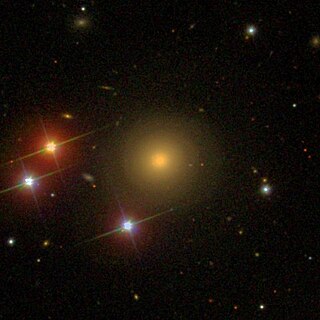
NGC 83 is an elliptical galaxy estimated to be about 260 million light-years away in the constellation of Andromeda. It was discovered by John Herschel in 1828 and its apparent magnitude is 14.2.
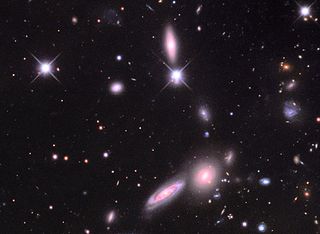
NGC 85 is an interacting spiral or lenticular galaxy estimated to be about 200 million light-years away in the constellation of Andromeda. It was discovered by Ralph Copeland in 1873 and its apparent magnitude is 15.7. The galaxy appears to be interacting with the companion spiral IC 1546.

NGC 96 is a lenticular galaxy estimated to be about 290 million light-years away in the constellation of Andromeda. It was discovered by Guillaume Bigourdan in 1884 and its apparent magnitude is 17.
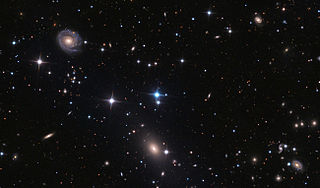
NGC 6085 is a spiral galaxy in the constellation of Corona Borealis. It is classified as a LINER galaxy and is a member of Abell 2162.
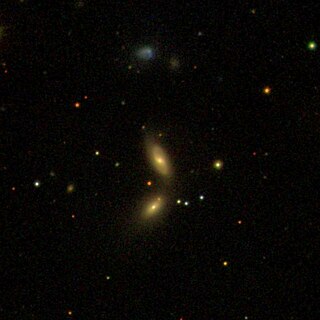
NGC 94 is a lenticular galaxy in the constellation Andromeda. It was discovered by Guillaume Bigourdan in 1884. This object is extremely faint and small. A little above the galaxy is NGC 96. NGC 94 is about 260 million light-years away and 50,000 light-years across.
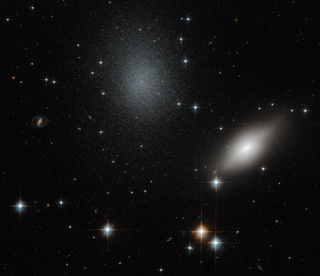
NGC 5011 is an elliptical galaxy in the constellation of Centaurus. It was discovered on 3 June 1834 by John Herschel. It was described as "pretty bright, considerably small, round, among 4 stars" by John Louis Emil Dreyer, the compiler of the New General Catalogue.

NGC 5559 is a barred spiral galaxy, located 240 million light-years away in the constellation of Boötes. It was discovered on April 10, 1785 by the astronomer William Herschel.

NGC 5575 is a lenticular galaxy in the constellation Virgo. The object was discovered on May 8, 1864 by the German astronomer Albert Marth.
NGC 4918 is a spiral galaxy in the constellation Virgo. The object was discovered in 1886 by the American astronomer Francis Preserved Leavenworth.

NGC 6975, also known as NGC 6976, is a spiral galaxy in the constellation Aquarius. The object was discovered on 12 July 1864 by the German astronomer Albert Marth.

NGC 920 is a barred spiral galaxy in the Andromeda constellation. The celestial object was discovered on September 11, 1885 by the American astronomer Lewis A. Swift.
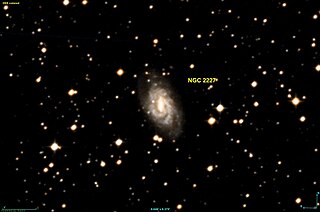
NGC 2227 is a barred spiral galaxy with a morphological type of SB(rs)c located in the direction of the Canis Major constellation. It was discovered on January 27, 1835, by John Herschel.

NGC 810 is an unbarred elliptical galaxy located in the constellation Cetus, approximately 360 million light-years from the Milky Way. It was discovered by the French astronomer Édouard Stephan in 1871.

NGC 996 is an elliptical galaxy of the Hubble type E0 in the constellation Andromeda. It is estimated to be 210 million light years from the Milky Way and has a diameter of approximately 75,000 ly. The supernova SN 1996bq occurred in this galaxy. NGC 996 was discovered on December 7, 1871 by astronomer Édouard Stephan.

NGC 941 is an intermediate spiral galaxy in the constellation Triangulum. It is an estimated 55 million light-years from the Milky Way and has a diameter of approximately 55,000 light years. The galaxies NGC 926, NGC 934, NGC 936, NGC 955 are located in the same sky area. NGC 941 was discovered by the astronomer William Herschel using on 6 January 1785.

NGC 3613 is an elliptical galaxy in the constellation Ursa Major. It was discovered by the astronomer William Herschel on April 8, 1793. NGC 3613 is the center of a cluster of galaxies, and has an estimated globular cluster population of over 2,000.

NGC 3254 is a spiral galaxy in the constellation Leo Minor. It was discovered on March 13, 1785 by the astronomer William Herschel. It is a member of the NGC 3254 Group of galaxies, which is a member of the Leo II Groups, a series of galaxies and galaxy clusters strung out from the right edge of the Virgo Supercluster.



















